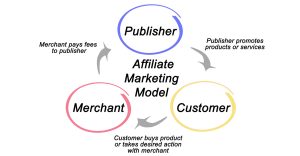
Share
It’s Saturday at around 11:30 am. The sun is shining, you had brunch with your friends earlier and had the best Vietnamese coffee of your life (because that happens on an average Saturday), and now you’re driving down to the Santa Monica Promenade with half a day of shopping ahead of you.
Depending on the kind of person you are, the thought of this could either be thrilling or daunting. But either way it goes, you’ve got your reusable tote bags, three shots of espresso in you, and you’re ready to rock. You wander, you try on, you force yourself to enjoy the seriously outdated music that some stores live for, and you buy. But, as we all know, the picture looks a little different now.
You don’t have to live under a rock or in a pineapple under the sea to know that shopping, and e-commerce by proxy, have shifted phenomenally in the wake of the pandemic. With consumer habits adapting to the at-home experience and brick-and-mortar retail stores closing, the e-commerce landscape has experienced exponential growth:
- Almost half of all global purchases are made online
- Consumers spent $861.12 billion online with U.S. merchants alone
- Last year, e-commerce sales worldwide amounted to 4.28 trillion USD
Riding the Kelly Slater-sized wave of this growth is something more and more people are becoming or have remained intrigued about. So, whether you’re thinking of starting a dedicated e-commerce business or have an existing in-person retail store that you want to bring online, you might like some guidance before you begin the journey.
We know the expedition can be challenging, so we’ve put together some tips that we hope will serve as a little pre-embarkment digital pocket guide.
1. Don’t be discouraged by the idea of starting
Building your e-commerce store can seem an intimidating task, especially if you don’t have intricate web design or coding experience, but it’s not as bad as you might think. Yes, I’m happy to say that you don’t have to be Mark Zuckerberg to get your goods online. Relieved?
The key here is to do one of two things. One: Work with a pro who’s not only talented at web development and e-commerce best practices, but also at ensuring that your best interests and branding are woven through every element of your website. And two: Use e-commerce platforms like BigCommerce, Shopify, or Squarespace. They’re made for those with little to no web design experience, and that’s a great place to start. Beyond ease of use, some platforms are highly customizable and allow you to improve the functionality of your store with an array of plug-ins and apps.
If you invest in creating a website suited to your needs the first time around, you’ll save so much effort, energy, and frustrating web editing sessions down the road. But, it doesn’t end there, because building a website is just one piece of the puzzle.
Getting started with planning your online business and building your website will take more than just a few hours, but be vigilant of how much time you put in during the beginning. No first version of a product is ever perfect, and if it is, you might’ve waited too long to launch. The moral of the story here is, don’t fear beginning and don’t fear launching, just jump in.
2. Do your brand justice and find a niche that you love
There’s step after step when it comes to creating a successful e-commerce brand, but sometimes it’s best to be a little less ambitious in the beginning and focus on the most pragmatic elements of your business. For example, what are you going to be selling?
Figuring that out can be an adventure in and of itself. Sometimes the question gets to people so much in the brainstorming process that they’re dissuaded from starting their business. Other times, people are so eager to get out there that they end up selling products in oversaturated markets with a lot of competitors already in the game.
So, what can you do differently? Just zero in on a niche that you love. But, how? Breathe easy, because It can be as simple as making a list of potential products that you’d enjoy selling. Think about what your friends, colleagues, and, most importantly, you’d be interested in buying. Then, focus on that. For even more creative input and firepower, consider checking out a few selling sites like Etsy, Pinterest, or even Instagram.
Once you’ve chosen your niche, put in some research to make sure that there’s enough demand for what you want to sell. You can perform a quick keyword search to see which brands or products are out there, or, for more, try running a search in Google Trends.
3. Bring quality and create value with your brand
Let’s say you’ve already pinpointed exactly the niche you want to house your brand under and the products you want to sell. Yes, you’re amazing. But now, it’s time to get a little curious. Take a similar product to one of the ones you’ll be selling and ask yourself one question: What is one thing you can change about it that’s going to make it better? It can be the price, design, color, functionality, and so much more. But just focus on one at a time.
Become the brand that finds solutions to existing problems and makes improved products. And what’s a practical way to do this? To start, look over reviews of the products that you want to sell. Take note of commonly mentioned product pain points, use what you find as free market research, and implement it when creating your own brand.
This is just one part of the equation of creating real value and differentiating your products from those of your competitors, but a vital one.
4. Activate your brand with omnipresent social media marketing
The importance of social media for marketing and building a brand presence is such a mature topic that I feel like it’s almost too obvious for me to comment on. Still, I’d be a bit remiss to exclude it from this list, so bear with me.
While certain marketing avenues are more valuable than others, there is still great value in being omnipresent across everything, including all social media channels.
Why? Let’s just let these fun facts do the talking:
- The average time spent on social media and messaging per day is 3 hours
- There are 3.6 billion social media users, which equates to about half the population
- 71% of consumers who have a positive experience with a brand on social media are likely to recommend the brand to their family and friends
A few worth activating your e-commerce brand with are Facebook, Instagram, and Pinterest. If you need even just one piece of information to sway you, 68% (or two-thirds) of adults in the U.S. are Facebook users. By posting high-quality and regular content to your accounts, you can increase your brand’s visibility and engage with customers in a unique way that fosters retention. Not only that, but you can use the channels’ native paid advertising to target your ideal customers through demographic and geographic variables.
5. Focus enough energy on SEO
Just as important as it is to make your brand appealing to customers, it is essential to make your website appealing to search engines. Appeal to a robot, you say? How? Well, the answer begins with an acronym, and that’s SEO (search engine optimization).
One day you get curious about a water bottle made entirely of rose quartz, you do a Google search to see if it exists, and the results that come up are what you tend to explore first. For a lot of people, a quick search is where they begin their shopping journey. So, let’s start there with a few pointers to assist you with SEO:
- Do some keyword and competitor research, because targeting the wrong keywords can ruin campaigns by generating few conversions and ultimately low-quality traffic. No one wants that, right? So to assist with this very important research stage of SEO optimization, try using tools like Ubersuggest.
- When you identify keywords that will rank well within Google or other search engines, include them throughout your product pages.
- Use and submit your website to Google Search Console to receive assistance with measuring your site’s search traffic and performance.
———
Having a blueprint is only the beginning, but having an idea of where you’re going before you start your journey is a great step. I would pop in a cliché about how it’s the journey, not the destination, but it’s only Tuesday and I think we all deserve a respite from that.





